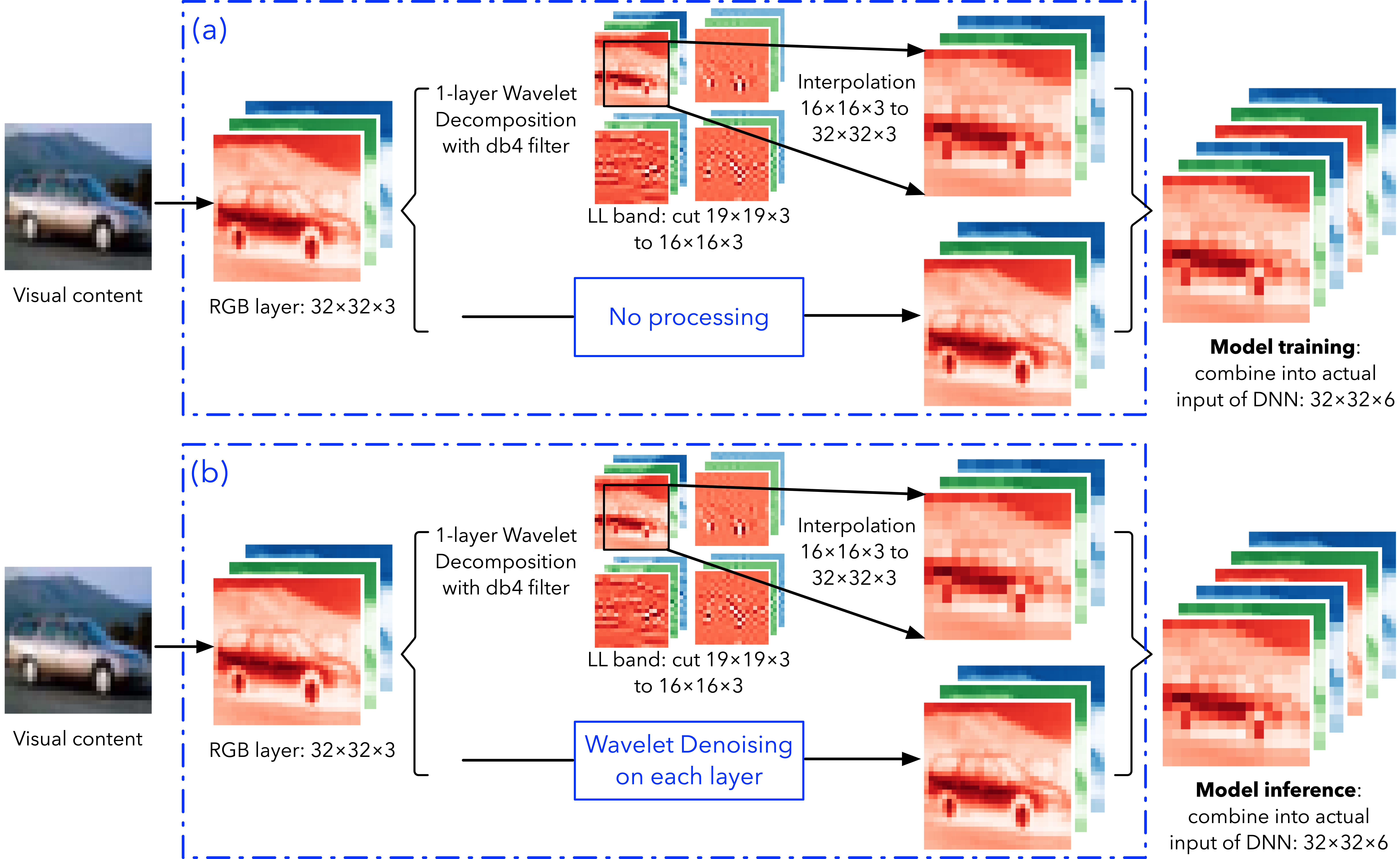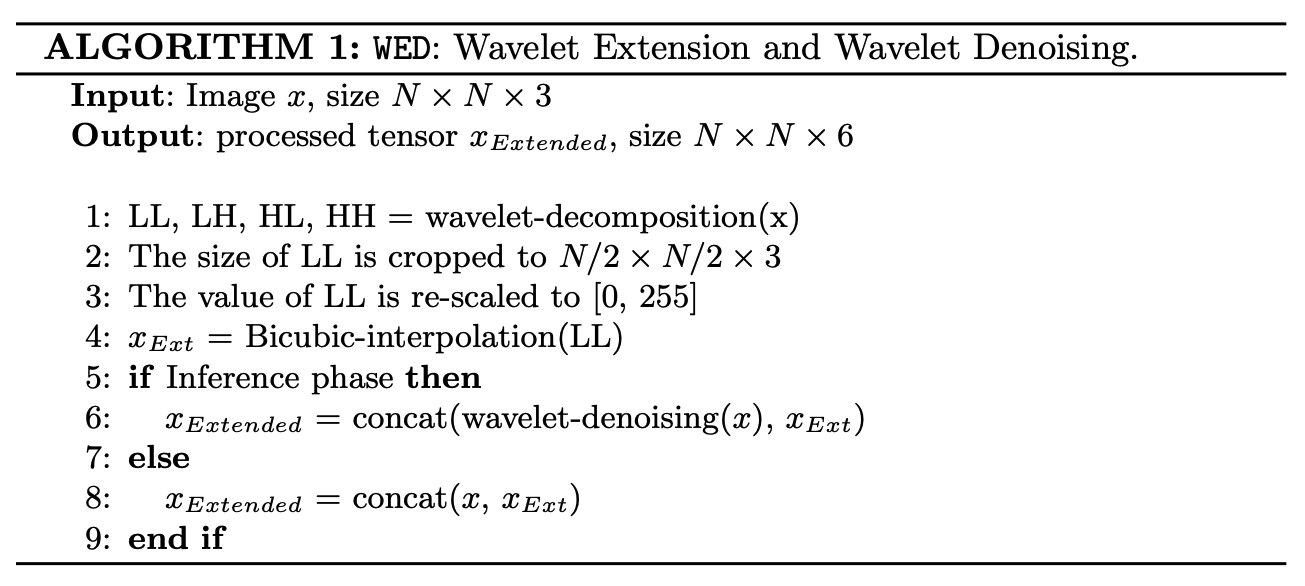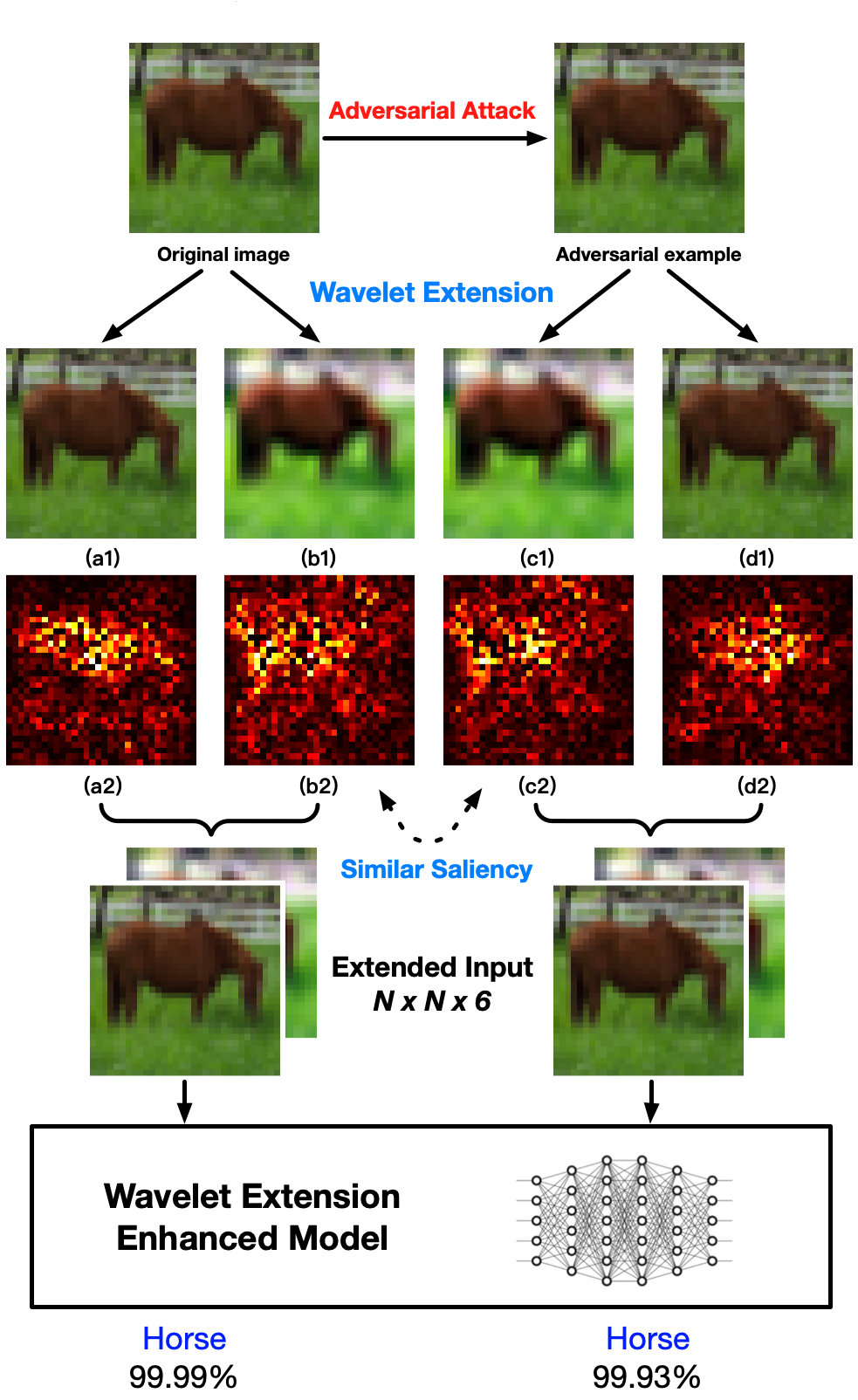The official implementation of the following paper:
Resisting Adversarial Examples via Wavelet Extension and Denoising
Qinkai Zheng, Han Qiu, Tianwei Zhang, Gérard Memmi, Meikang Qiu and Jialiang Lu
Abstract: It is well known that Deep Neural Networks are vulnerable to adversarial examples. An adversary can inject carefully-crafted perturbations on clean input to manipulate the model output. Past years have witnessed the arms race between adversarial attacks and defenses. In this paper, we propose a novel method, WED, to better resist adversarial examples. Specifically, WED adopts a wavelet transform to extend the input dimension with the image structures and basic elements. This can add significant difficulty for the adversary to calculate effective perturbations. WED further utilizes wavelet denoising to reduce the impact of adversarial perturbations on the model performance. Evaluations show that WED can resist 7 common adversarial attacks under both black-box and white-box scenarios. It outperforms two state-of-the-art wavelet-based approaches for both model accuracy and defense effectiveness.
We propose a novel approach, WED, to defend adversarial examples via Wavelet Extension and Denoising. The key insight of our approach is that by extending the input image into a higher dimensional tensor with non-differentiable wavelet transforms, it is extremely difficult for the adversary to generate perturbations that alter the model’s output. Specifically, WED consists of two innovations. The first innovation is Wavelet Extension. WED adopts wavelet transform to extend the input image into two scales: the original one and low-frequency one. These two scales are then combined as one tensor as the input, which makes it difficult to generate effective adversarial perturbations. The second innovation is to adopt wavelet denoising only at the inference step. The original image, as one scale, keeps the original visual content and elements to assist the model classification. WED also utilizes wavelet denoising during the inference phase to reduce the impact of the adversarial perturbations.
We visually show the effectiveness of the wavelet extension by the saliency map. The saliency map is obtained by first calculating gradients of outputs of the penultimate layer with respect to the input images, and then by normalizing the absolute values of those gradients. A brighter pixel in the saliency map means that the corresponding pixel in the original image has more influence on the model’s output. The above figure shows that although the saliency maps of a clean image (a2) and its AE (c2) are very different, the saliency maps of their extended components are nearly identical (see (b2) and (d2)). This indicates that the wavelet extension can effectively remove the effects of adversarial perturbations.
- scipy==1.5.2
- cleverhans==3.0.1
- PyWavelets==1.1.1
- matplotlib==3.3.1
- tensorflow==1.14.0
- scikit_image==0.16.2
- Keras==2.2.4
- joblib==0.16.0
- numpy==1.19.1
- ISR==2.2.0
- Pillow==8.3.0
- resnet==0.1
- skimage==0.0
@inproceedings{zheng2020resisting,
title={Resisting Adversarial Examples via Wavelet Extension and Denoising.},
author={Zheng, Qinkai and Qiu, Han and Zhang, Tianwei and Memmi, G{\'e}rard and Qiu, Meikang and Lu, Jialiang}
}
If you have any question, please raise an issue or contact qinkai.zheng1028@gmail.com.


